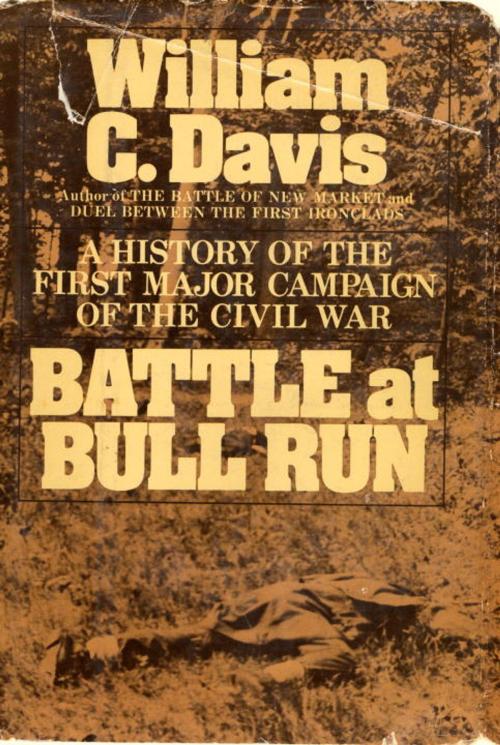Battle at Bull Run
A History of the First Major Campaign of the Civil War
Nonfiction, History, Americas, United States, Civil War Period (1850-1877), Military, Fiction & Literature, Essays & Letters| Author: | William C. Davis | ISBN: | 9780307817518 |
| Publisher: | Knopf Doubleday Publishing Group | Publication: | June 6, 2012 |
| Imprint: | Doubleday | Language: | English |
| Author: | William C. Davis |
| ISBN: | 9780307817518 |
| Publisher: | Knopf Doubleday Publishing Group |
| Publication: | June 6, 2012 |
| Imprint: | Doubleday |
| Language: | English |
Two great, untested armies were readying for the first—and what many believed would be the last—major conflict between North and South. On the eve of July 21, 1861, one Northerner wrote: “The sky is perfectly clear, the moon is full and bright, and the air was still as if it were not within a few hours to be disturbed by the roar of cannon and the shouts of contending men.” So optimistic were the people in Washington that a crowd of civilians came from the city with picnic hampers to witness the crushing defeat of the upstart “rebels.” It was, says William C. Davis, “the twilight of America’s innocence,” and the following day the mood would shatter in a battle that confounded the expectations of both sides—the first Battle at Bull Run.
William C. Davis has written a compelling and complete account of this landmark conflict. The Battle at Bull Run (or Manassas) is notable for many reasons. It was a surprise victory for the Confederacy, a humiliating defeat for the Union, and the first ominous indication that a long and bloody war was inevitable. It marked the first strategic use of railroads in history, and the first time the horrors of the battle were photographed for the folks back home. It was also a training ground for some of America’s most colorful military figures: P.G.T. Beauregard, Joe Johnston, Irvin McDowell and “Stonewall” Jackson. Drawing from a wealth of material—old letters, journals, memoirs and military records—Davis brings to life a vivid and vital chapter in American history.
Two great, untested armies were readying for the first—and what many believed would be the last—major conflict between North and South. On the eve of July 21, 1861, one Northerner wrote: “The sky is perfectly clear, the moon is full and bright, and the air was still as if it were not within a few hours to be disturbed by the roar of cannon and the shouts of contending men.” So optimistic were the people in Washington that a crowd of civilians came from the city with picnic hampers to witness the crushing defeat of the upstart “rebels.” It was, says William C. Davis, “the twilight of America’s innocence,” and the following day the mood would shatter in a battle that confounded the expectations of both sides—the first Battle at Bull Run.
William C. Davis has written a compelling and complete account of this landmark conflict. The Battle at Bull Run (or Manassas) is notable for many reasons. It was a surprise victory for the Confederacy, a humiliating defeat for the Union, and the first ominous indication that a long and bloody war was inevitable. It marked the first strategic use of railroads in history, and the first time the horrors of the battle were photographed for the folks back home. It was also a training ground for some of America’s most colorful military figures: P.G.T. Beauregard, Joe Johnston, Irvin McDowell and “Stonewall” Jackson. Drawing from a wealth of material—old letters, journals, memoirs and military records—Davis brings to life a vivid and vital chapter in American history.















